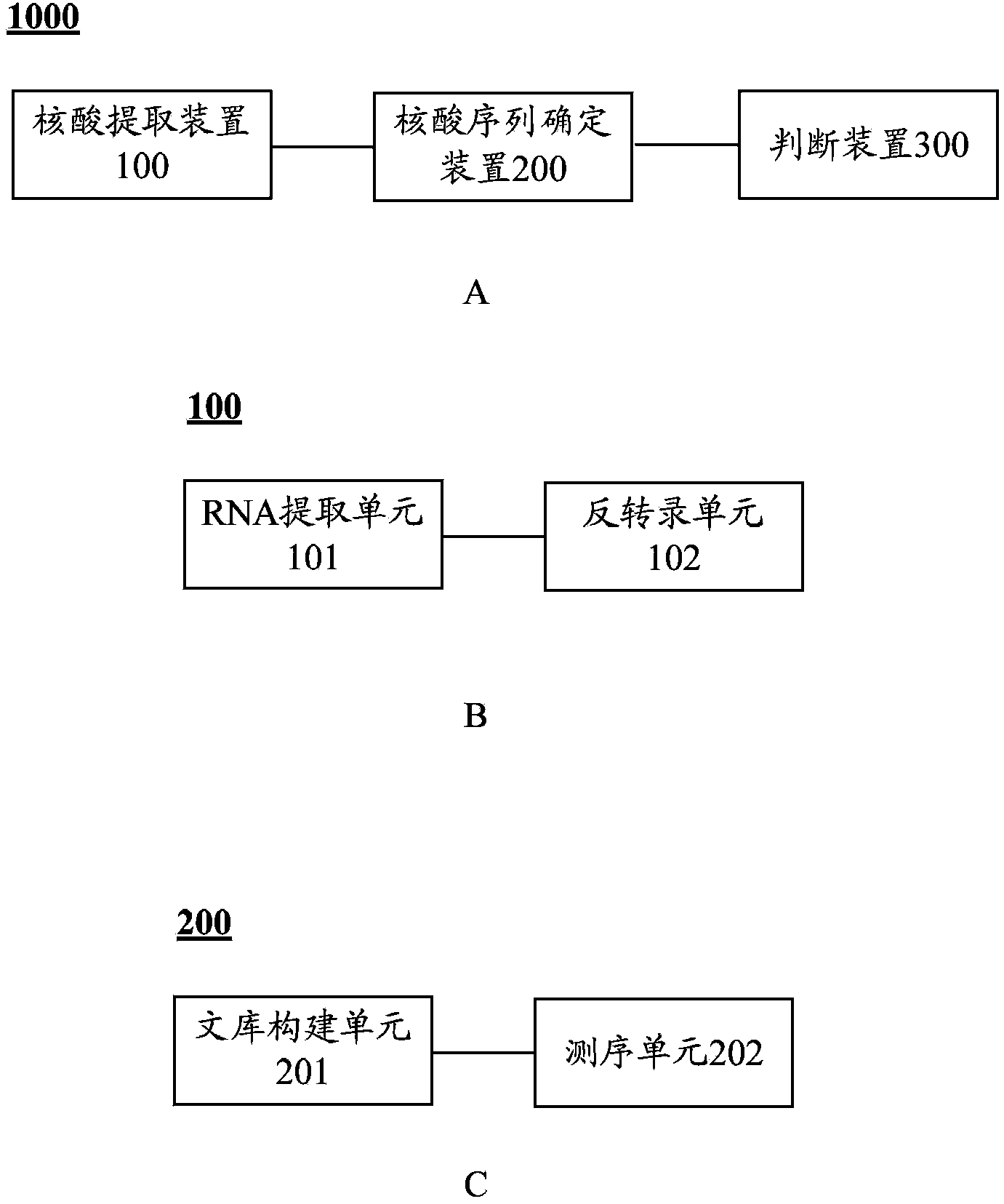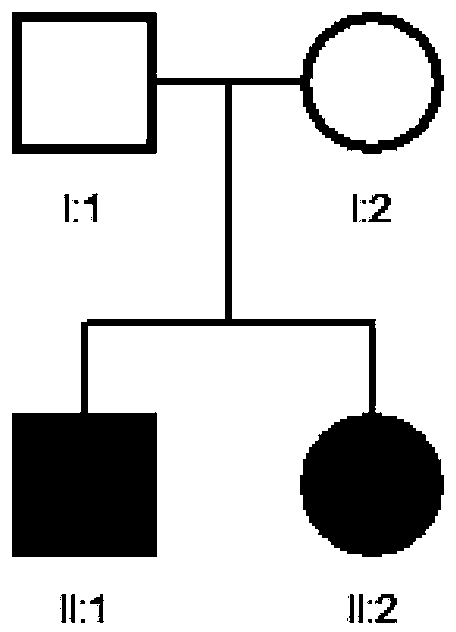TMC1 gene mutant and applications thereof
A c.1171c, optional technology, applied in the fields of application, genetic engineering, plant gene improvement, etc., can solve the problems of sensorineural deafness that need to be further studied
- Summary
- Abstract
- Description
- Claims
- Application Information
AI Technical Summary
Problems solved by technology
Method used
Image
Examples
Embodiment 1
[0061] Example 1 Determination of the pathogenic genes of sensorineural hearing loss
[0062] 1. Sample collection:
[0063] The inventor collected the genes of a second-generation Chinese sensorineural deafness patient family and 208 normal people outside the family family. figure 1 The family map of family 1 of a sensorineural hearing loss patient is shown. Such as figure 2 As shown, where □ represents a normal male, ○ represents a normal female, ■ represents a male patient, and ● represents a female patient. by figure 2 It can be seen that there are 4 members in this family, among which the second-generation children are patients with sensorineural hearing loss, and the first-generation parents are normal members.
[0064] In addition, the inventors performed CT examinations of the temporal bones for all patients in the family, and the inner ears were not deformed (see figure 2 ), but there is no concurrent systemic disease. The above results prove that the disease of the pati...
Embodiment 2
[0073] Example 2 Sanger method sequencing to verify the pathogenic genes of sensorineural deafness disease
[0074] Collection family figure 2 Using QIAmp Blood kit (Qiagen, Hilden, Germany) to extract genomic DNA in peripheral blood leukocytes from the peripheral blood of the four members, use Qubit Fluorometer and agarose gel electrophoresis to measure DNA concentration and purity, and each sample obtained Genomic DNA OD260 / OD280 are between 1.7-2.0, the concentration is not less than 50ng / ul, and the total amount is not less than 3μg.
[0075] Respectively for 2 patients ( figure 2 Middle Ⅱ:1, Ⅱ:2), 2 normal people in the family ( figure 2 In Ⅰ:1, Ⅰ:2) and 208 normal human genes outside the family were tested, primers were designed for the sequence of the compound heterozygous mutation site of the TMC1 gene, and the relevant sequences were obtained through PCR amplification, product purification, and sequencing. According to the result of sequence determination, whether it is...
Embodiment 3
[0093] Example 3 Detection kit
[0094] Prepare a detection kit, which contains c.589G> for detecting mutations A and c.1171C> The primer pairs of T are shown in the table below:
[0095]
[0096] The DNA of the test subject is extracted according to the method described in Example 1, and the extracted DNA is used as a template to perform a PCR reaction with the above-mentioned primers, and the PCR product is purified according to conventional methods in the art, and the purified product is sequenced. Observe whether the sequence obtained by sequencing has c.589G> A and c.1171C> T mutation.
PUM
 Login to View More
Login to View More Abstract
Description
Claims
Application Information
 Login to View More
Login to View More - R&D
- Intellectual Property
- Life Sciences
- Materials
- Tech Scout
- Unparalleled Data Quality
- Higher Quality Content
- 60% Fewer Hallucinations
Browse by: Latest US Patents, China's latest patents, Technical Efficacy Thesaurus, Application Domain, Technology Topic, Popular Technical Reports.
© 2025 PatSnap. All rights reserved.Legal|Privacy policy|Modern Slavery Act Transparency Statement|Sitemap|About US| Contact US: help@patsnap.com



